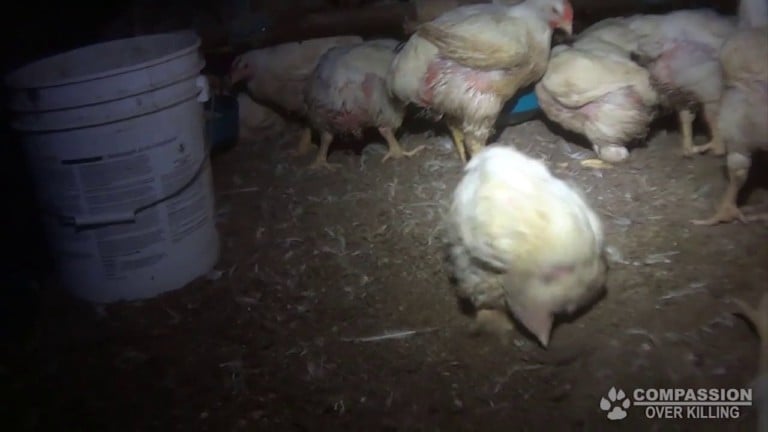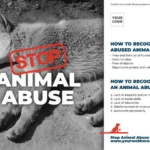The poultry industry has long been a subject of intense scrutiny, with Tyson Foods, one of the largest poultry producers in the world, often standing at the center of the controversy. The question of whether Tyson engages in animal cruelty is not merely speculative; it is grounded in evidence from investigations that have sought to expose the dark underbelly of agricultural production, highlighting systemic practices that raise ethical and moral concerns. This exploration delves into the findings of several investigations aimed at examining the treatment of animals within Tyson’s operations and the broader implications for animal welfare.
The foundational premise of these investigations stems from the idea that animals, particularly those raised for food, possess the capacity to experience pain, suffering, and distress. In Tyson’s case, undercover investigations have illuminated various degrees of neglect and abuse that chickens endure throughout their lives. These revelations are not isolated incidents but rather indicative of systemic issues within the industrial farming model that prioritizes profit over humane treatment.
Initial observations often highlight the conditions under which chickens are raised. Tyson chickens are typically reared in large, densely packed warehouses where thousands of birds coexist within confined spaces. Such environments can lead to distressing outcomes; stress-induced behaviors, such as pecking each other or exhibiting signs of fear, often manifest due to overcrowding. The physical infrastructure of these facilities doesn’t just physically limit the animals; it also deprives them of the chance to express natural behaviors. The inability to roam freely or engage in instinctual actions fundamentally undermines their well-being.
Investigations have documented unsettling instances of cruelty. With hidden cameras in place, footage has emerged showcasing workers engaging in abusive practices, including the rough handling of birds and inadequate methods of euthanasia. In one report, chickens were shown to be violently tossed into crates or left to suffer in distressing conditions before and during transportation. Such actions raise significant ethical questions about the treatment of these animals during a crucial phase of their lives—how they are processed for meat. This treatment not only defies the established norms of humane care but also defies legal standards designed to protect animals from cruelty.
Many argue that Tyson’s practices stem partly from the relentless push for efficiency and profit maximization inherent in industrial agriculture. The economic incentive to produce larger quantities of meat within tighter time frames can sometimes lead to inhumane practices becoming normalized. As Tyson attempts to meet the growing demand for chicken products, the focus on output can overshadow the need for ethical considerations regarding the lives of the animals involved. This prioritization of quantity over quality inevitably leads to troubling outcomes, where animals are treated as mere commodities rather than sentient beings.
Moreover, the investigative findings suggest that these issues are not merely the result of a few rogue employees but reflect a broader systemic challenge within the poultry industry. Tyson’s sheer size and market influence enable them to set standards that often proliferate across the sector, thereby shaping the ethical landscape of poultry farming. The lack of accountability and the absence of regulatory scrutiny further exacerbate these issues, fostering an environment where animal welfare can be compromised.
However, it is crucial to contextualize the issues raised by these investigations. The moral implications of animal farming, particularly in large-scale operations like Tyson’s, invite a broader dialogue about societal values regarding food production and consumption. For many consumers, the convenience of affordable meat often overshadows the complexities behind its production. This disconnect fosters an unsettling complacency about the treatment of animals within the industry. If consumers were more aware of the living conditions and treatment of animals, would their purchasing decisions change? This question has profound implications for animal welfare advocacy.
The growing movements advocating for animal rights and humane treatment have sought to address these disparities. As awareness increases, many consumers are gravitating towards brands that promote ethical practices and transparency in animal husbandry. The demand for products labeled as “humanely raised” evidences a shift in consumer preference, nudging corporations, including Tyson, to reevaluate their practices. Although progress is incremental, it signals a potential metamorphosis in the relationship between consumers, producers, and animals.
In light of these revelations and ongoing concerns, a fundamental question persists: What are the responsibilities of corporations like Tyson Foods in addressing animal welfare? Should they merely comply with regulations, or is there a moral obligation to adopt more humane practices proactively? This responsibility extends beyond compliance; it intertwines with notions of ethics, consumer trust, and corporate accountability. The revelations from investigations serve as a clarion call for accountability that transcends industry norms, advocating for a paradigm shift in how animals are viewed and treated in agricultural practices.
In conclusion, investigations into Tyson Foods have unveiled essential insights into the troubling practices associated with large-scale poultry farming. While animal cruelty exists in various forms, the systemic issues observed raise critical questions about ethics, responsibility, and societal values concerning animal welfare. As a society, we must grapple with our choices and hold corporations accountable for their treatment of sentient beings. Ultimately, the path towards more humane practices in the poultry industry lies not only in the hands of producers but also in the collective choices of consumers who demand a more compassionate approach to animal welfare.





